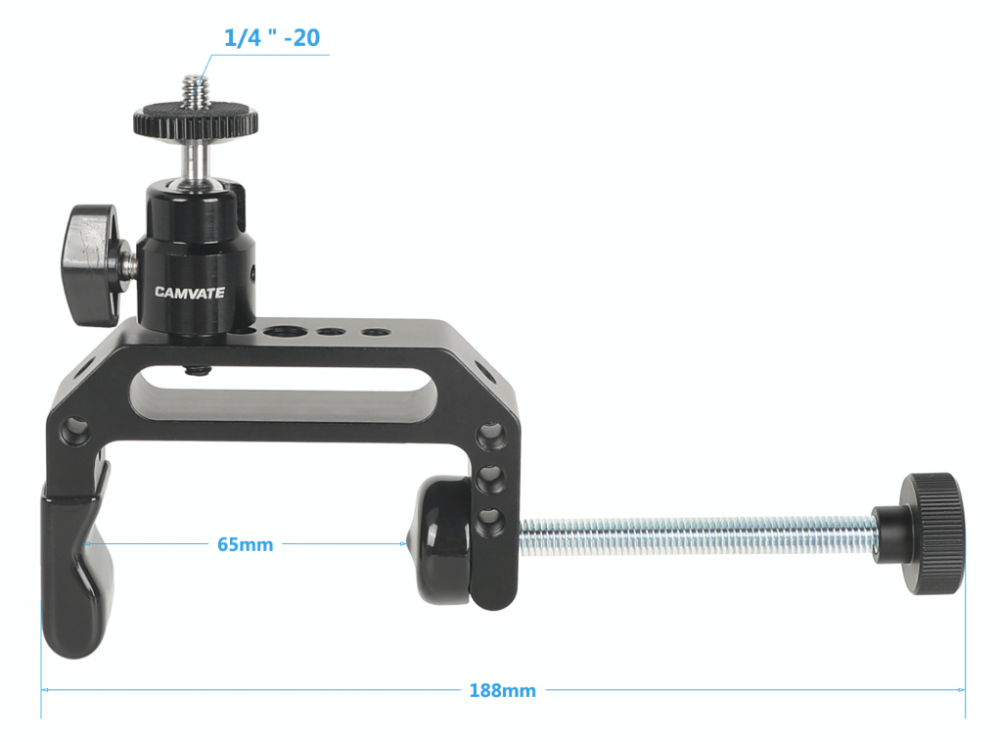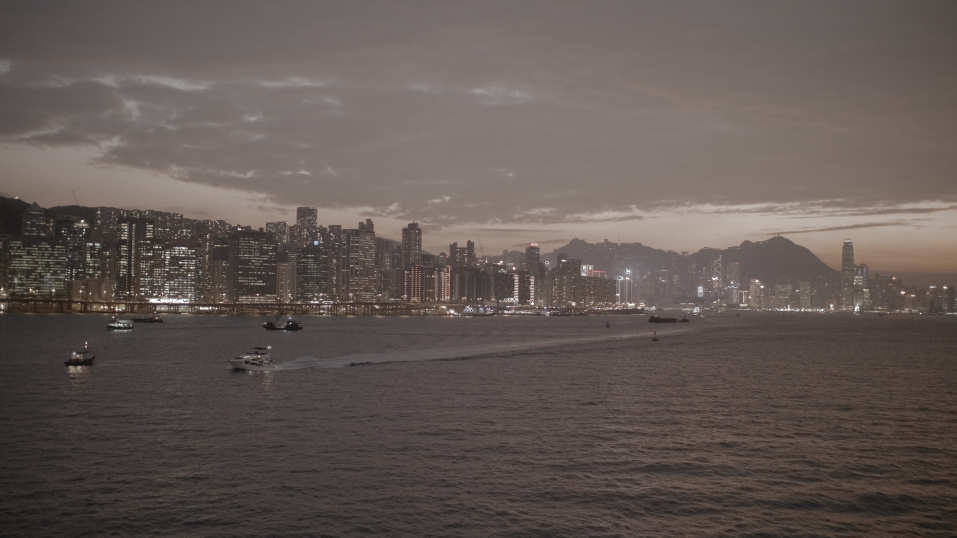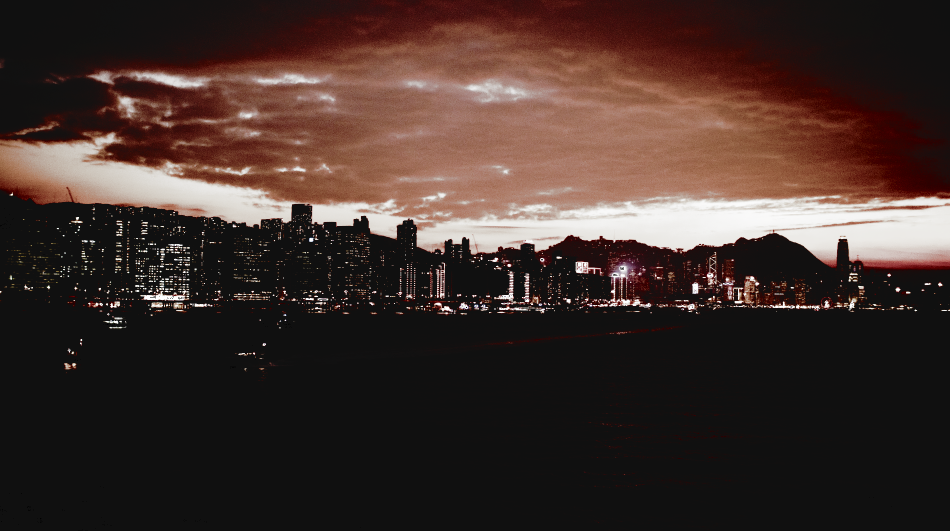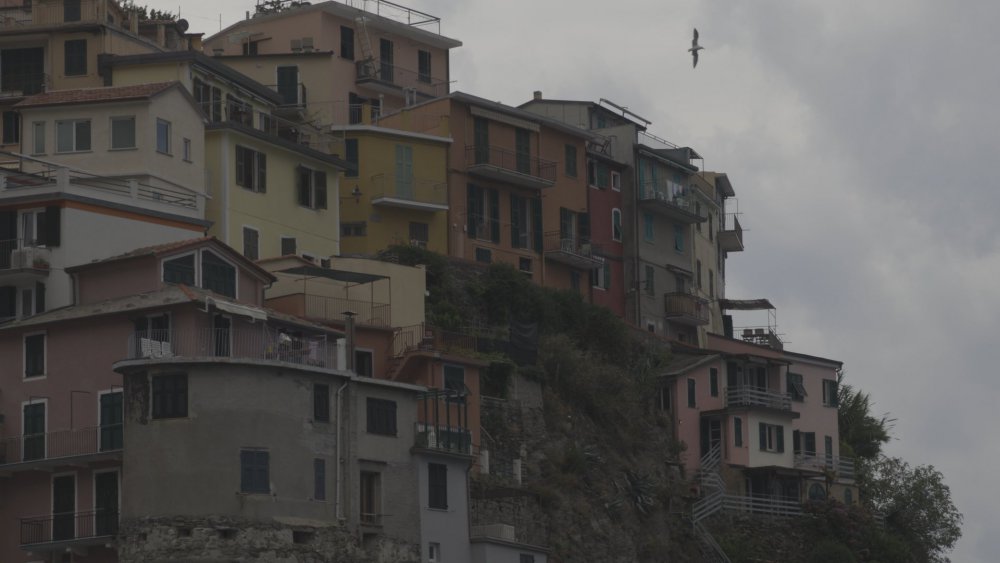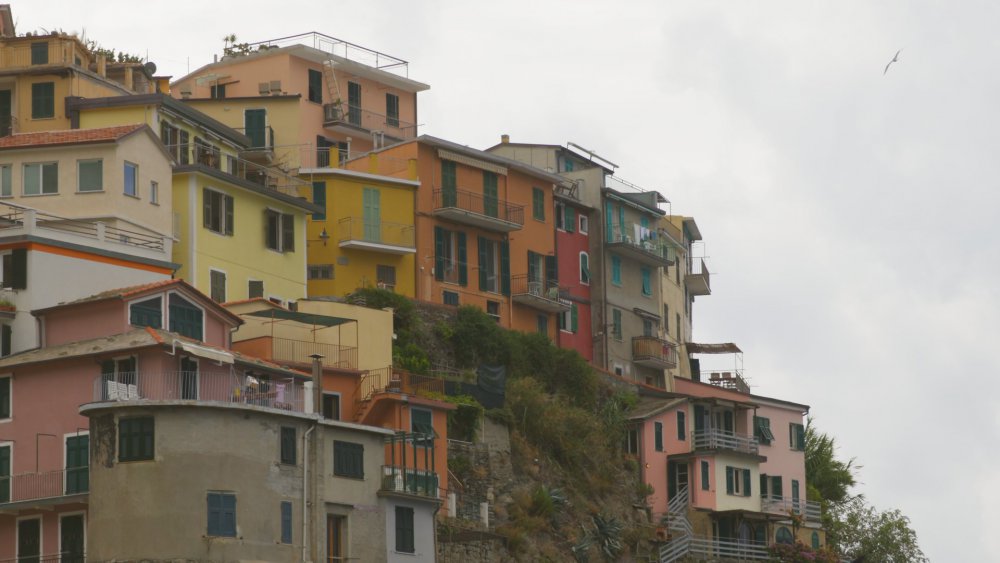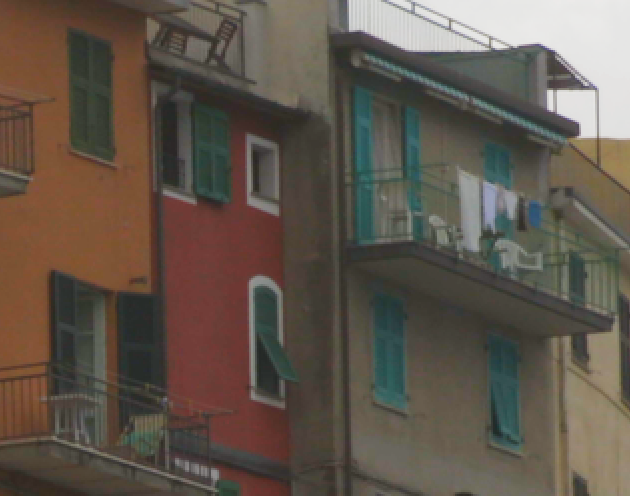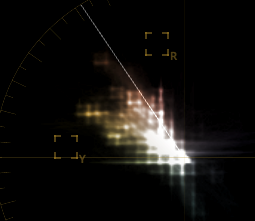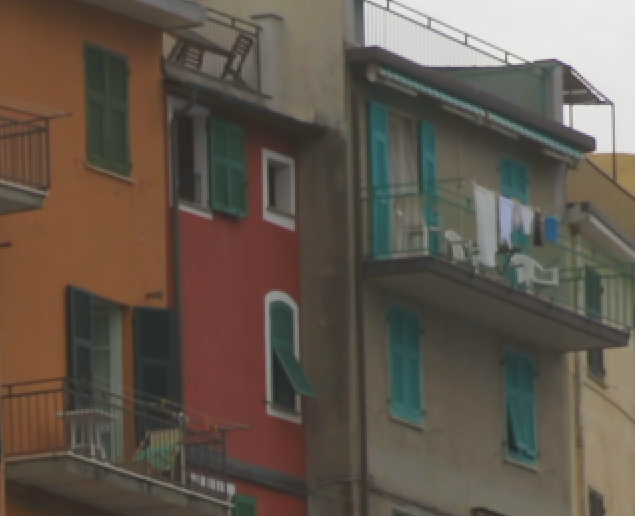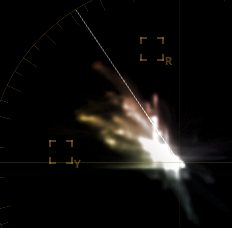-
Posts
7,817 -
Joined
-
Last visited
Content Type
Profiles
Forums
Articles
Everything posted by kye
-
Ah ha... now I get it! You use the clamp to attach and then the head to change the orientation 🙂 Considering the cost of these things I'd be more likely to buy one and put both cameras on it rather than buy two. For that I'd probably mount a couple of arca-swiss quick-release clamps to a flash bracket and then the flash bracket to a ball head and then the ball-head to the grip head. So how do I mount a ball-head to the grip head? Is there a pin of some kind that goes in the grip head and ends in a 1/4-20?
-
I'm not convinced - the 24-70/2.8 will be as good a lens that Canon / Nikon / Sony etc can make, but they all managed to extend the zoom range by lowering the aperture by a stop. I cannot believe that the same trade-off isn't possible at a slightly lower focal length.
-
D16 would do it! The GX85 is definitely a small package, but the D16 would fit in much more convincingly on the set of the original Star Trek, and I suggest that perhaps that's the more important criteria 🙂
-
What makes you think he hasn't already got one? ....or more? 😂😂😂
-
I am at that stage of just refining my kit with odds and ends. I think this is a good place to get to because it means that you're actually taking feedback from how you work on real projects, and you're refining your kit to be the most useful to how you work. In terms of new camera GAS, I'm thinking I should build a collection of great looking stills from videos I've shot just so that when I start going "maybe I need a...." I can just go look in that folder and remember how good the camera I already have is. That can then me a kickoff point to thinking about lights and composition and things that may actually improve my images... 🙂
-
or maybe I mount a ballhead to the end of these...
-
-
This one has the right geometry, but doesn't open up far enough...
-
You're paranoid! Not sure why you requested that, but anyway, moving on... 😆😆😆 Ideally I'll have two, one for my action camera and one for my second camera (likely a GH3), so spending $100 each for tripods that weigh ~1kg each doesn't really make sense, especially considering that I wouldn't use them for anything else. I've taken a tripod on long trips and never used it, and taken a large Gorillapod and only used it for time lapses mounted to a balcony rail, so this is literally the only thing I need anything for. Thanks, half the battle is knowing the right terminology. However, it does look like neither is a good fit. The problems with the Mafer style is that they don't seem to open very wide, with the max I could find being 2" which is probably fine for rigging etc but is on the smaller side for handrails, so I'd be running the risk of it just not being large enough if I got a larger handrail. The Cardellini look to solve this issue, and the vise-clamping motion seems to be perfect, but I'm not that sure the geometry quite works. If I oriented it like the below then that would work for free-floating handrails but wouldn't work for handrails capping a glass sheet, which are very common. Ie, I can't attach the clamp upright like this: on balconies that are a rail on top of a sheet of glass like this: In that situation I could clamp it so the threaded rod is horizontal, but then I'd have trouble attaching the tripod mount on the end. This clamp has the right geometry, but it's special order from B&H and the price is getting a little high at USD$54 each. This could really be achieved with a cheap hardware store clamp with an angle bracket welded to it. I think my late father-in-law had a welder gathering dust in the shed, so maybe I should fire it up and with a few dollars of parts and the worst welding job in the world I'd have something suitable. I was just thinking there would be a $7 high-impact plastic clamp on eBay that someone knew about.
-
This looks like a good option as it looks like it can clamp on flat and round things, but it's 1.2kg / 2.7lb !!! https://www.bhphotovideo.com/c/product/840831-REG/Kupo_KG500511_Large_Gaffer_Grip.html/specs
-
I'm now thinking about travelling again (but not doing it yet!!) and am looking for recommendations for a camera clamp for a balcony handrail. The context is that I often shoot time lapses from balconies and want something that can clamp a full-size camera and lens combo securely to the balcony. Some of them have a handrail, but others are just a piece of toughened glass that isn't capped off with anything. Here's some random shots of various balcony hand-rail setups.. Ideally, I'd like it to: be able to clamp on just glass, or a thicker handrail have the camera mount on one side of the clamp so I can put the camera on the balcony side of the railing so if the clamp fails the camera falls into the balcony and not over the edge be lightweight as I'll be travelling with it, although size isn't as much of a concern so sturdy plastic would be fine I think I've carried gorilla pods before, but I've realised that I don't end up using them except for this, and they're big and heavy and not actually that sturdy for clamping to anything, especially as I'd like to be able to leave them unattended, even in a decent breeze, and not be afraid they're going to fall. Does anyone have any recommendations?
-
Yeah, odd that it was 2019 TV shows vs 2020 movies - not a straight comparison and sample size isn't that large.
-
Sorry - I mean FF. There's heaps of lenses starting at 24mm FF FOV, but if you want to get the 16mm FF FOV then you're stuck with 2X zooms. If you don't care about wider than 24mm FF FOV then you're covered, but the 16mm FF FOV is part of my trinity (16 / 35 / 85mm FF FOVs) and they're super common if you're a vlogger too. Even on MFT there's the 6-11, 7-14, 8-18, and 9-18... all 2X zooms. That Nikkor is so 3D compared to the Taks. I found the Taks pretty flat in their rendering too. My love goes almost exclusively to the MFT Voigtlanders now, but the Helios is a true classic that can be had for almost nothing... I've also re-discovered my Minolta 135/2.8 too, such nice rendering!!
-
Watched this recently, comparing the Alexa 65 to the Alexa Mini. Unlike typical YT hit-and-run equipment reviewers, this is a proper test done with care, rather than just waving the cameras around. To my eye the 65 has extra shallow DoF, the vignetting and barrel distortion from the lens, and greater resolution of course, but the interesting thing is that the colour science just kills the mini! I do wonder how much of the 3D rendering could be emulated by matching DoF and applying the vignetting and barrel distortion in post. ....and to those who think that 4K matters, even to Netflix, please recalibrate yourselves.... Source: https://ymcinema.com/2021/01/20/the-cameras-behind-best-netflix-original-movies-of-2020/
-
So, why are there no 16-50+ F4 lenses? Everyone makes a 16-35/2.8 and a 24-70/2.8, but lots of people slowed the aperture by a stop and made 24-105/4 and there's even a Nikon 24-120/4, but no-one seems to have slowed the aperture of the 16-35 and extended it's zoom range. A 24-120 is 60% longer than 24-70, but even if they could only add 50% more range to the 16-35 that would still make it a 16-52mm lens. Then you could get an extra prime in there. For people who like to shoot wider than 24, this would be a big improvement.
-
One of the philosophies I've adopted is that the things you can do to make bad footage look passable also help to make good footage look great, and great footage look spectacular. Luckily I have an almost endless supply of terribly-shot footage, which I shot because I didn't know what I was doing for a long time, and so I've been in my own self-made crash-course for quite some time now!
-
Oh, that's cool. Only being able to copy one node at a time is occasionally frustrating. One of the things that I am very aware of is that Resolve is the software component of an ex $100K+ hardware solution. The heritage of hardware solutions really came from tape cutting/splicing rigs for editing and things like colour timing machines: On such machines the workflow is determined by doing whatever the hell the hardware wants you to do, and the user-experience is that the engineers push the potential of the technology and the user learns to jump through whatever hoops are required to make the machine go. The reason I bring this up is that these limitations are often still hidden deep in the way that something like Resolve works. For example, a machine such as the above would be configured with the settings for the whole roll of film, then the roll would be processed. I ran into this "configure things on the input" philosophy in Resolve when I was half-way through an edit and was looking for some function in the edit page to change settings on a clip, and the answer was that I change it in the Media Pool, because (you guessed it) the workflow is designed for you to ingest and configure / code all your media before you edit. That's one example, but there will be many things that are constructed in a certain way that was relevant back in the day but is no longer required, but is kept, either because they haven't thought to change it, or because it's baked into the workflows of Company 3 etc.
-
One of the challenges with spatial NR is that it softens edges and fine detail, so if you only NR the red channel then you might get rid of most of the noise but only smear a third of the edge definition, probably a good compromise. I have no idea how the NR features in the software actually work - maybe they're doing this already. Not sure about temporal NR on ALL-I vs Long-GOP but you may find that Long-GOP might have a finer and less compressed noise considering that the keyframe paints the scene and then the progressive frames only have to deal with what changes, which would be mostly noise unless there was heavy movement in the scene. All else being equal, the Long-GOP would have much more bandwidth allocated to the noise and therefore it would be higher quality, and perhaps eliminated more easily as it would be closer to being random. Certainly the comparisons I made showed that ALL-I was lower quality compared to Long-GOP when they both had the same bitrate.
-
Yeah, tomorrow is the best predictor of tomorrow. ..or to put it another way, things change but not as fast as you'd like.
-
No worries. You may find differences between how Canon and the external recorder encode things. Not all electronics / algorithms are equal and even something like throwing more CPU power at something might mean it can do the encoding at a higher quality. Ultimately when you push your footage you're pushing everything, not just the bit-depth. 14-bit footage will still break if you've got lots of noise, or if it's heavily compressed with lots of jagged edges. I came to the conclusion it's all about latitudes too. I then extrapolated that to the idea that the less I have to stress an image the better, so now I shoot in a modified Cine-D profile but also in 10-bit, rather than shooting HLG 10-bit and then having to push it around to get a 709 type of image. To put it another way, I get the camera to push the exposure to 709 before the conversion from RAW to 10-bit, instead of me doing it afterwards in post. Recording something flat and then expanding it to full contrast in post is really just stretching the bits further apart. If you recorded something in a LOG profile that went from 30IRE to 80IRE in 10-bit for the full exposure range and then expanded it to put the range from 0-100IRE then you've multiplied the signal by two, effectively giving you a 9-bit image. If that LOG image was 8-bit to begin with then you're now dealing with a 7-bit image by the time it gets to 709. Cinematographers talk about things like the Alexa only having a few stops of latitude, and they're shooting RAW! If we're shooting 8-bit or even 10-bit then that means we have almost no latitude at all, so that's the philosophy I've taken.
-
Here's a flat scene filmed in 8-bit C-Log on the XC10. Ungraded: With a conservative grade: Cropped in: Here's the vectorscope that shows the 8-bit quantisation, which is made worse by the low-contrast lighting conditions and the low-contrast codec (C-Log): I managed to "fix" the noise through various NR techniques, which also fixed the 8-bit quantisation: Yes, this is a real-world situation. Is it a disaster, not for me, an amateur shooting my own personal projects. Would it be a disaster for someone else? That's probably a matter of taste and personal preference. I have other clips where I really struggled to grade the footage and although the 8-bit codec wasn't the cause, it also added to the difficulty I experienced. I now shoot 10-bit with the GH5 and don't remember seeing a 'broken' vectorscope plot like the one shown above. When I tested 10-bit vs 12-bit vs 14-bit (using Magic Lantern RAW) I personally saw a difference going from 8 to 10-bit, I saw a very small difference going from 10 to 12-bit, and I couldn't see a difference going from 12 to 14-bit. Others said they could see differences, and maybe they could. A couple swore that 14-bit is their minimum. I've also seen YT videos where people test 8-bit vs 10-bit and some tests found they could break the 8-bit image under normal circumstances, others couldn't break the 8-bit under ridiculously heavy-handed grading that you'd never do in real life. Here's me trying to break a 10-bit file from the GH5... Ungraded 4K 150Mbps HLG: Unbroken despite horrific grading: It's probably a matter of tolerance. From my experience 8-bit is good enough in most situations and 10-bit is basically bullet-proof, but others have different tolerances and shoot in different situations. Also, different cameras perform differently.
-
I was aware of that when I said it, so I totally agree. I guess this raises an interesting question around BMs business model - will they ever stabilise their lineup, or will they just build new cameras with whatever seems like a good idea at the time? From a business perspective, it's way cheaper to take an existing model and make some upgrades, rather than having to re-do everything. I don't know what the insides of the P4K and P6K look like, maybe they re-used the same circuit board layouts, but maybe not. I suspect you already know this, but even the task of taking a circuit that is fully designed and working out how to physically design the circuit board (where all the little wires go on the board, and where they get routed so they don't cross each other or interfere etc) that's a long and complicated process, just in itself! If you can keep the same layout then you can save money on not having to reconfigure all the machines that build them, etc etc etc. Maybe BM will be famous for being the camera company that just builds new cameras, with the sensor, sensor size, resolutions, storage mechanisms, battery type, lens mount, etc etc, being different on almost every camera they ever make. It certainly means they can be super agile! If so, I vote for them making a camera that's smaller, mirrorless, has an articulating screen, IBIS, and very long battery life. They could make it FF to compete with the latest trends. Then I'd record in 1080 Prores internally (downsampled from the full sensor) and be a happy camper! If they put Prores 4444 or HQ in there then we'd have 264Mbps / 396Mbps in 12-bit and it would be practically like RAW. I'd really enjoy their updated colour science and likely inclusion of dual-native ISO. Yeah, who knows what. They're so unpredictable and seem to want to grab headlines, which I understand makes sense for commercial purposes, so I guess you can't rule anything out. It would make sense for them to release a box-style camera though, probably based on the P6K, as it would make a great crash / drone camera, which is something that Hollywood / film-makers would use, which seems to be their target market. Although having said that Hollywood are their target market, I wouldn't be surprised if secretly people like Monica Church, a Youtuber with ~1.4M subs who uses the P6K for little doc style pieces as well as vlogs, and may well have picked it for the punch-in ability for single-camera interview setups, which she uses from time to time. I suspect she has two of them, but not sure. There must be hundreds or even thousands of folks like Monica who use the P6K for stuff like this. Her previous camera was a GH5, which she loved: Yeah, crazy times!
-
Interesting combo - BMMCC and A7S3. Will you be grading the Sony to match the Micro, or the Micro to match the Sony? I'd be very curious to see some test shots if you get a chance to shoot something you're allowed to share!




